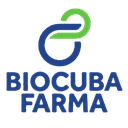Executive Secretary

IX Conferencia Científica Internacional sobre Desarrollo Agropecuario y Sostenibilidad
X Simposio de Medicina Veterinaria y Zootecnia
Resumen
Las características productivas del trópico presenta condiciones de producción diferentes a las de las razas altamente productoras desarrolladas en el mundo. A partir de lo anterior, el objetivo general de esta investigación sea caracterizar las condiciones agrometeorológicas que actúan directamente sobre los animales en sistemas productivos multipropósitos. Se observó una tendencia espacial decreciente del confort de los animales de occidente a oriente, siendo las situaciones más desfavorables en la región oriental del país y las mejores características en el occidente y las zonas montañosas. En relación a la marcha temporal del ITH (Índice de temperatura y humedad), se ha encontrado que la curva es unimodal con valores máximos y, por tanto, menos confortables para los animales en las semanas 29 a 31 del año (últimas semanas de julio y primeras de agosto). Asimismo, se ha confirmado que la producción lechera presenta sus valores máximos durante julio y agosto y mínimos de febrero a abril. Aunque el ITH ha mostrado asociaciones significativas con la producción de leche, se ha señalado que las condiciones de disconfort influyen, aunque no son determinantes para ambos indicadores. Por otro lado, la variabilidad interanual del ITH no sigue un patrón estable y se ha observado una tendencia de incremento en sus valores, lo que implica una mayor frecuencia en situaciones de alerta, peligro o emergencia.
Abstract
The productive characteristics of the tropics present production conditions different from those of the highly productive breeds developed in the world. Based on the above, the general objective of this research is to characterize the agro-meteorological conditions that act directly on animals in multipurpose production systems. A decreasing spatial tendency of animal comfort was observed from west to east, with the most unfavorable situations in the eastern region of the country and the best characteristics in the west and mountainous areas. In relation to the time course of the ITH (Temperature and Humidity Index), it has been found that the curve is unimodal with maximum values and, therefore, less comfortable for the animals in weeks 29 to 31 of the year (last weeks of July and first weeks of August). It has also been confirmed that milk production has its maximum values during July and August and minimum values from February to April. Although the ITH has shown significant associations with milk production, it has been pointed out that discomfort conditions have an influence, although they are not determinant for both indicators. On the other hand, the interannual variability of the ITH does not follow a stable pattern and an increasing trend in its values has been observed, which implies a greater frequency in situations of alert, danger or emergency.
Sobre el ponente

MsC. Ismabel María Domínguez Hurtado

Discussion

